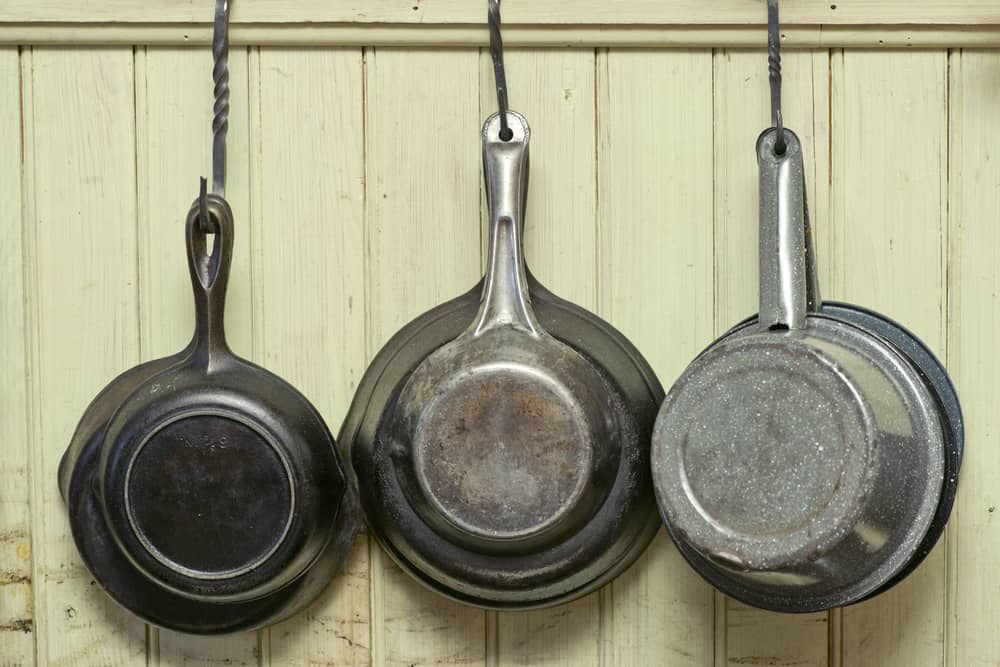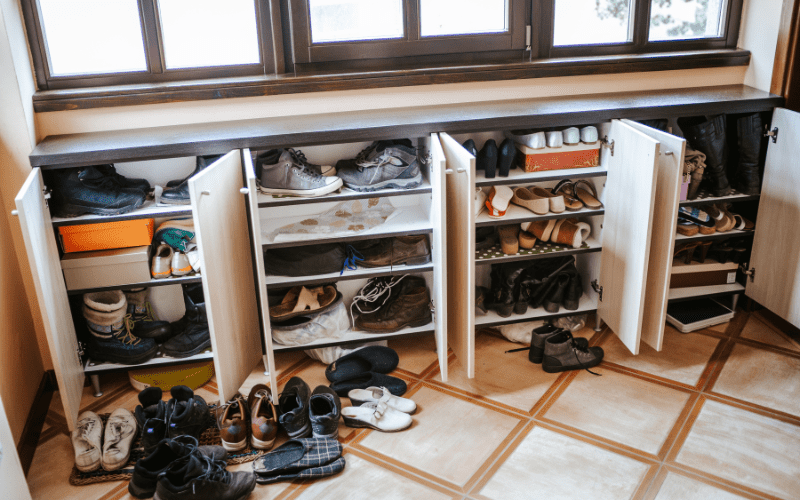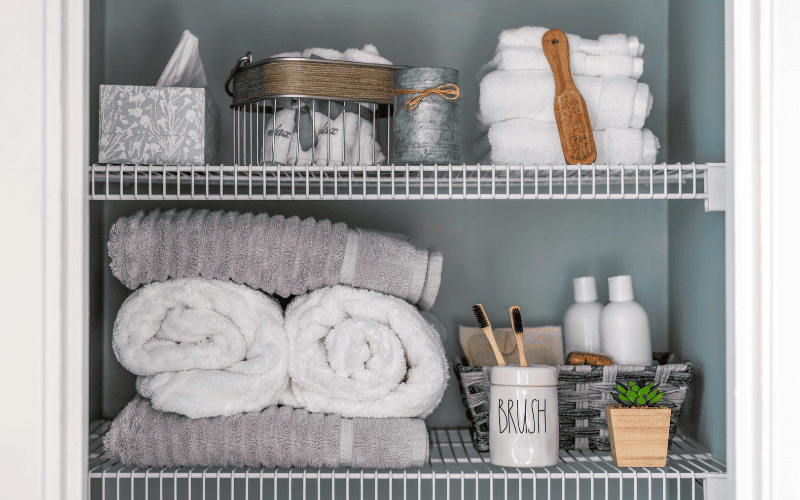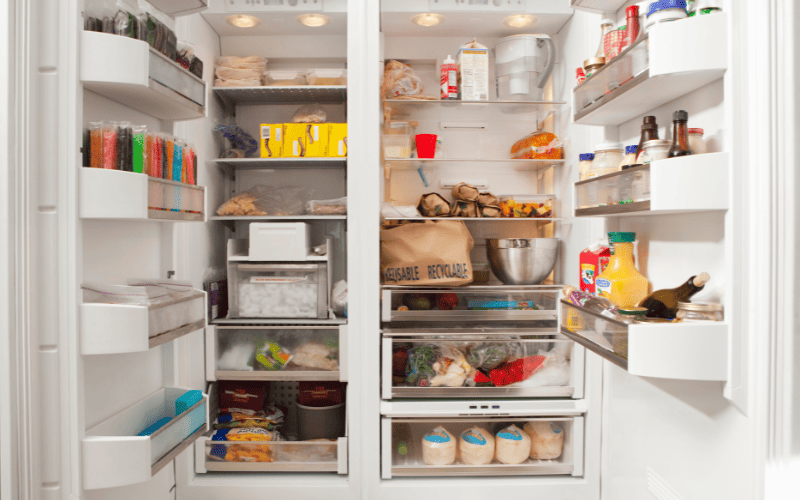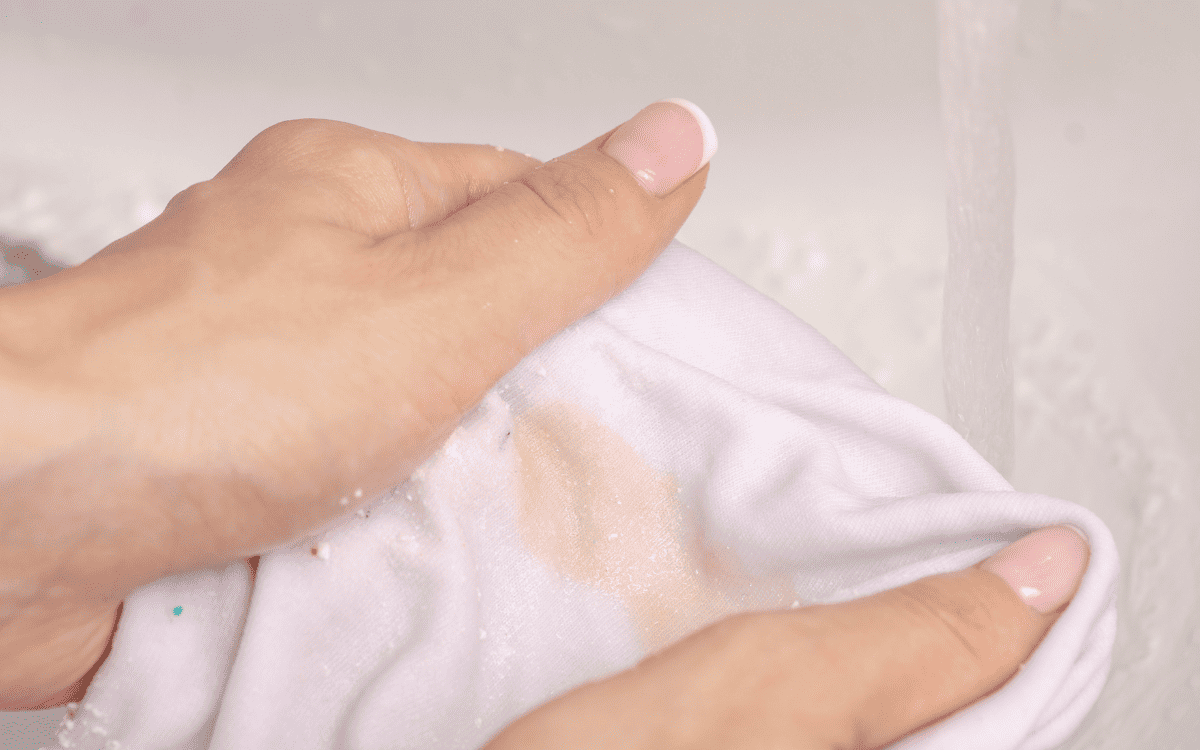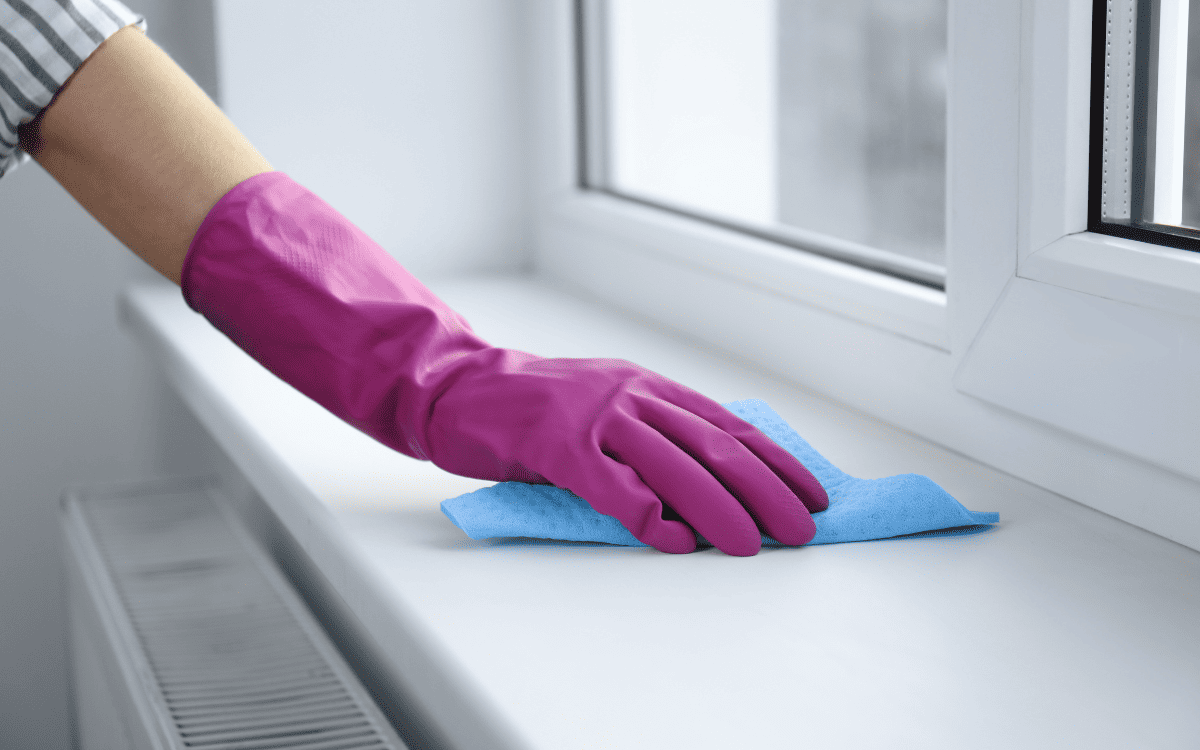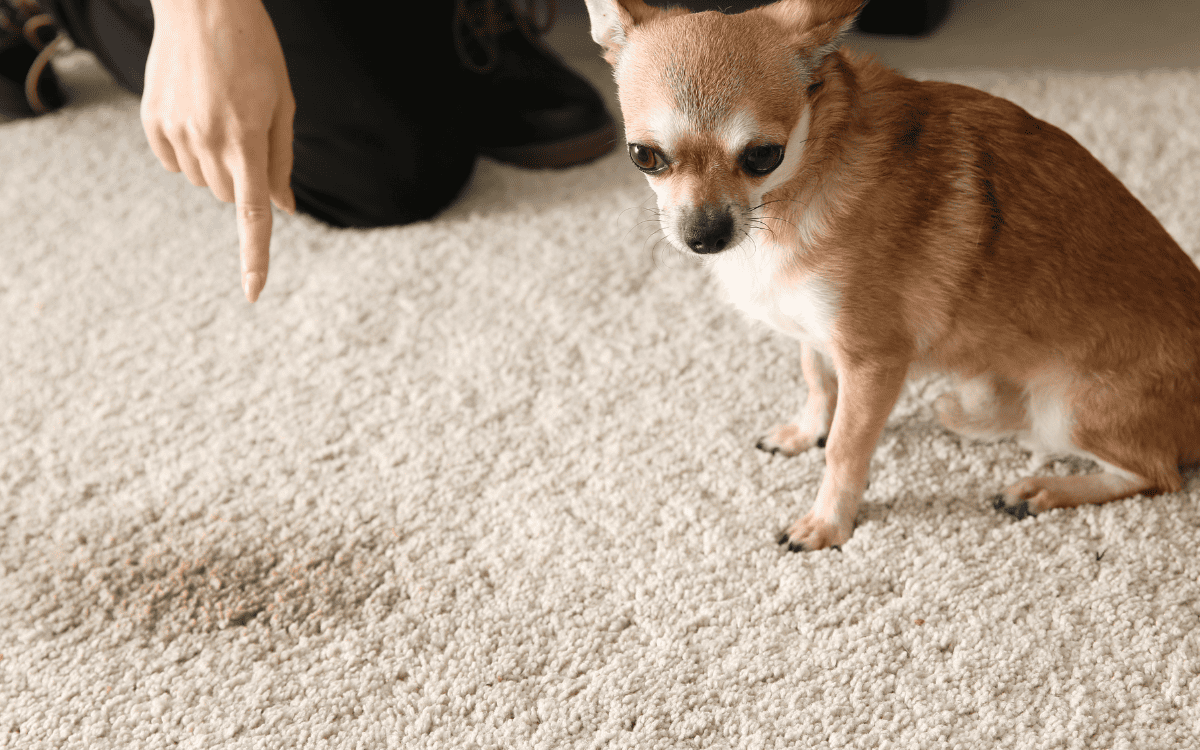Storing cast iron cookware the wrong way will leave you with a rusty and sometimes even unusable cast iron skillet. I have a specific spot in my kitchen where the cast iron skillets go, and I’m pretty particular about how it’s stored there and why! I’ll show you how to store a cast iron skillet so it’s ready to use the next time you pull it out!
How To Store Cast Iron Cookware
To store a cast iron skillet or cookware, ensure it’s thoroughly cleaned and dried to prevent rust. Store it in a dry, non-humid area in your kitchen, ensuring it’s not touching other pans. Ideally, hang it or use a pan organizer for better air circulation and to avoid moisture accumulation.
Why Proper Storage Matters?
As much as I love cast iron cookware, it is known to rust. The combination of iron, carbon, and silicon used in creating cast iron pots makes them susceptible to rust. Any exposure to oxygen and water can cause this to happen when you store your cast iron.
One of the best ways to prevent your cast iron from rusting is to keep it in tip-top shape with proper seasoning and washing. Without following the proper procedures, you won’t be able to prevent rust, and the longevity of your cast iron skillet will be greatly reduced.
Preparing Cast Iron for Storage
I’ve found that if I follow these three procedures before I store cast iron pans and skillets, the cast iron holds up and will last for years to come.
Tip #1: Cleaning
Cleaning a cast iron pan is a little different than your traditional pots and pans. You will want to get the pan as clean as possible without destroying the seasoning.
- Take a paper towel and wipe out as much grease and oil as possible from the bottom of your cast iron skillet.
- Use a mild sponge or rag and hot water to rinse out the cast iron and remove any black residue that may be lingering.
- If you need to use a mild dish soap to get it clean, you can, but take it easy on the amount of soap as it will break down your seasoning.
- Rinse the cast iron cookware.
- Dry completely using a kitchen towel.
Tip #2: Removing Rust
If you have a cast iron pan with rust on it, follow these steps for easy removal. I would recommend getting the rust off prior to putting the cookware away so it doesn’t continue to spread.
- Fill your sink with warm water, and add one half cup of vinegar.
- Let the cast iron cookware soak in the sink for about a half hour.
- Rinse and look for additional rust; repeat the process if necessary, adding a bit more vinegar if needed.
- Dry completely and then season the pan before you store it.
Tip #3: Seasoning
Seasoning adds a protective barrier or thin layer to the bottom of cast iron skillets to ensure that food does not stick.
- Apply grapeseed oil, vegetable oil, or another oil with a high smoke point to the bottom of a dry cast iron skillet. Check out my article on the best oil to season a cast iron.
- Use paper towels to spread the oil on the bottom and sides of the cast iron pan. In fact, I’d spread the oil all over your cast iron.
- Place the cast iron skillet in the oven at 400 degrees for a half hour.
- Repeat the process again, but wait until the cast iron cools or is at least low heat.
- I find that seasoning works best if I do three rounds.
Ideal Storage Conditions for Storing Cast Iron Skillets
For the most part, as long as I take a dish towel and completely dry the inside of my cast iron skillet, I don’t have trouble keeping it in good shape. However, here are a few last tips to ensure you store the skillet in the right place.
Tip #4: Storing in the Oven
This is a habit that many people get into simply because they are short on kitchen space. The oven is a spot that traditionally does not have excess moisture or humidity, making it a good spot to store your cast iron.
I would be very careful about stacking pans in the oven. If your cast iron skillet is the only thing you keep in the oven, then it’s not a problem. Again, always ensure your skillet is dry before putting it in the oven to store.
Tip #5: Hanging the Skillet
Depending on your kitchen layout, you may have room to hang your skillet upside down from the handle. This can be a great storage space as long as you don’t have a damp climate with a lot of humidity in the house.
Tip #6: Storing in a Dry Cupboard
There are two things I look at when finding the perfect cabinet or drawer to store a cast iron skillet. The first is that there will be some air circulation in the cabinet, and the other is to ensure no excess moisture.
I go as far as to keep the cast iron away from the dishwasher and sink areas. In addition, I don’t put them in cabinets over the stove in case there is any steam that would trap moisture in the cabinet.
Tip #7: Using a Pan Organizer
A pan organizer in your cabinet will help you store cast iron pans without having to leave them on the bottom of the cabinet. I find that outside of wall hooks, this is a great way to ensure moisture can’t sit and accumulate in the cast iron pans.
Tip #8: Storing with Paper Towel
Lastly, if you have no other choice than to store your cast iron with other cookware like your dutch oven or even another cast iron pan, make sure to put paper towels between them. I have always used dish towels for this same purpose.
The key here is that the excess moisture will be picked up on the towels, and your cast iron will stay rust-free.
You may also like:
The Complete Cast Iron Care Guide
How To Clean Black Residue Off Cast Iron Skillet (5 Quick Ways)
What is The Best Oil to Season a Cast Iron Skillet: 8 Options
Can You Put Cast Iron in the Dishwasher?
Common Mistakes to Avoid When Storing Cast Iron
I highly recommend following my procedures for preparing cast iron for storage. Here are the mistakes that most cooks make. I know after a long day of cooking and having to store food and clean dishes, the last thing you want to worry about is your cast iron, but it’s worth the few extra minutes.
- Storing when damp: always completely dry cast iron pans before you store them.
- Storing without oiling: properly seasoned cast iron resists rust, making it easier to remove stuck-on food.
- Storing in a humid place: humidity will lead to rusting of your cast iron; always avoid humid areas in the kitchen.
- Stacking without protection: Without paper towels or dish towels between your pots and pans, rusting and even scratching and deterioration can occur.
Final Thoughts
I know cast iron seems like a pain to store, season, clean, etc. However, when you get good in the kitchen, this process will become part of your routine and be well worth your time. Simple steps to maintain your cast iron cookware will help ensure you don’t have to continually replace it.
FAQ
Is it safe to store a cast iron pan on the top shelf?
It’s best to avoid storing a cast iron pan on a top shelf. The pan is heavier than most other pans in your kitchen, and when removing it from the top shelf, you could drop it, causing damage to you and the pan.
How do you store cast iron pans for moving?
When moving, wrapping cast iron pans with your kitchen towels is best. You have to pack your kitchen towels anyway, so this will take care of cast iron and help you pack simultaneously. Always ensure your cast irons are perfectly dry before storing them.

